Zarivar Lake, also known as Zrebar or Zaribar, is a remarkable freshwater lake located in the Zagros Mountains, near the city of Marivan in the Kurdistan Province of western Iran. It is a natural gem and one of the most significant tourist attractions in the region, recognized for its unique ecosystem, scenic beauty, and cultural importance.
Geography and Hydrology:
- Location: The lake is nestled in a large longitudinal valley, situated approximately 3 kilometers (1.8 miles) west of Marivan city, at an altitude of about 1,285 meters (4,216 feet) above sea level. It is surrounded by dense forests and mountains, creating a picturesque setting.
- Dimensions: Zarivar is a relatively large lake, with a length of up to 5 kilometers (3.1 miles) and a maximum width of about 1.6 kilometers (0.99 miles). Its maximum depth can reach up to 9.5 meters (31 feet) in certain areas, though an average depth of 4-5 meters is more common.
- Water Source: What makes Zarivar Lake particularly unique is its primary water source. Unlike most lakes, it is not fed by a single major river. Its water is supplied by numerous underground springs at the bottom of the lake, as well as by rain and melted snow from the surrounding mountains. This constant supply of fresh water is what prevents the lake from drying up, even during periods of low rainfall.
- Unique Features: The lake is known for its “moving islands,” which are composed of reeds and vegetation that have been torn from the banks by wind and water currents. These islands can drift across the lake, adding to its unique and dynamic character. In winter, the lake’s surface can freeze, offering a spectacular sight, though the areas with active springs often remain unfrozen.
Ecology and Biodiversity:
- Ecosystem: Zarivar Lake is an important freshwater wetland and a crucial habitat for a diverse range of plant and animal species. Its ecosystem is considered a rare phenomenon in the region.
- Flora: The lake’s shores are lined with extensive reed beds. The surrounding mountains are covered with oak forests, while the valley floor features lush vegetation and pastures.
- Fauna:
- Birds: The lake is a significant destination for birdwatchers. It is a vital breeding and wintering ground for a wide variety of migratory birds. Over 222 bird species have been identified, including migratory waterbirds like mallards, common pochards, white egrets, gray herons, and various species of ducks and storks. The lake’s importance for avian life has been highlighted by its designation as an Important Bird Area (IBA) and its potential for a Ramsar site.
- Fish: The lake is home to both native and introduced fish species. Native fish include spotted capoeta and Caspian shemaya, while introduced species like common carp, grass carp, and silver carp have been introduced for commercial and recreational fishing.
- Other Wildlife: The surrounding area provides a habitat for various mammals, including wild boars, red foxes, and wild cats. The diverse landscape also supports reptiles, amphibians, and a wide array of insects.
Tourism and Recreation:
- Activities: Zarivar Lake is a major draw for tourists, offering a variety of activities throughout the year:
- Boating: The most popular activity is boating, with both motorboats and pedal boats available for hire.
- Fishing: Fishing is a common pastime, especially for carp, and is a popular activity for locals and tourists alike.
- Birdwatching: The lake’s rich avifauna makes it a paradise for birdwatchers.
- Hiking and Photography: The scenic surroundings provide excellent opportunities for hiking and nature photography.
- Paragliding: The mountainous terrain around the lake makes it a popular spot for paragliding, offering breathtaking aerial views.
- Ice Skating: In winter, when the lake freezes over, it becomes a venue for ice skating.
- Camping: Designated camping spots with basic amenities are available for visitors who wish to stay overnight and enjoy the serene environment.
Cultural and Historical Significance:
- Folklore: The lake holds a deep cultural significance for the local Kurdish people. Numerous legends and folktales surround its origin. One of the most famous legends tells the story of a tyrant king whose city was submerged by the lake after a dervish cursed it. Locals believe the remains of the city can still be found beneath the water.
- Local Economy: Zarivar Lake plays a vital role in the local economy, not only as a tourist destination but also for fishing and providing water for agricultural irrigation in the surrounding areas.
Conservation Status and Challenges:
- Protected Area: Zarivar Lake is recognized as a natural sanctuary and has been registered as a National Natural Heritage Site of Iran. It is also a designated Important Bird Area (IBA) and a Ramsar site, highlighting its international importance.
- Threats: Despite its protected status, the lake faces challenges, including pollution from agricultural runoff and the potential for invasive species to disrupt its delicate ecosystem. Conservation efforts are in place to preserve its pristine condition.
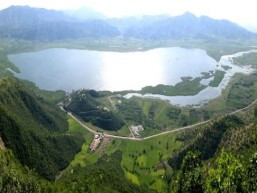
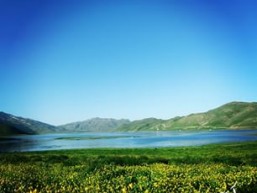
Neor Lake
Neor Lake, situated in the northwestern region of Iran, is a significant natural attraction located on the border between the Gilan and Ardabil provinces. It
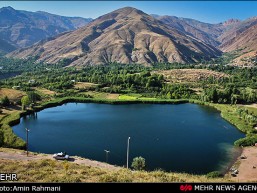
Evan Lake
Evan Lake, also known by its Persian name Evan Lake, is a stunning small alpine lake located in the Alamut region of the Alborz Mountain
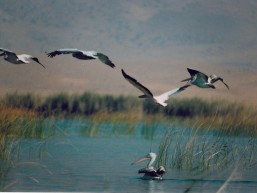
Parishan Lake
Parishan Lake, also known by its local names Moor, Famour, or Pagan, is a significant and beautiful freshwater lake located in the Fars Province of
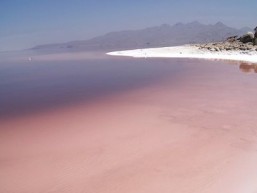
Urmia Lake
Parishan Lake, also known by its local names Moor, Famour, or Pagan, is a significant and beautiful freshwater lake located in the Fars Province of



